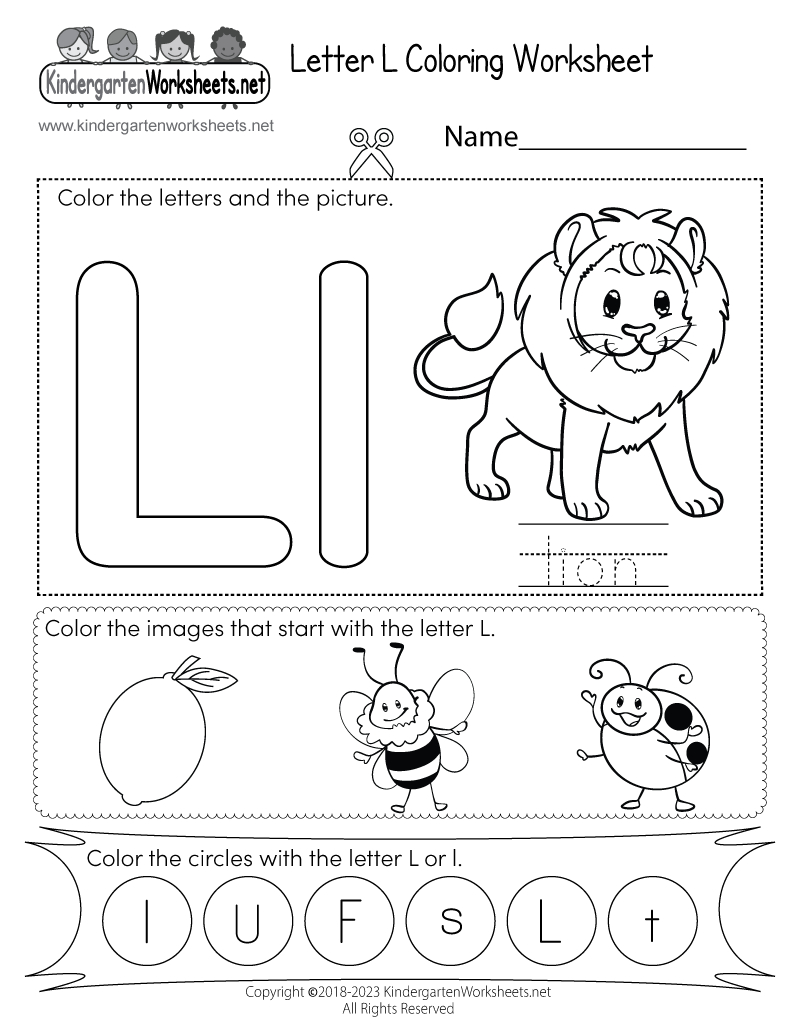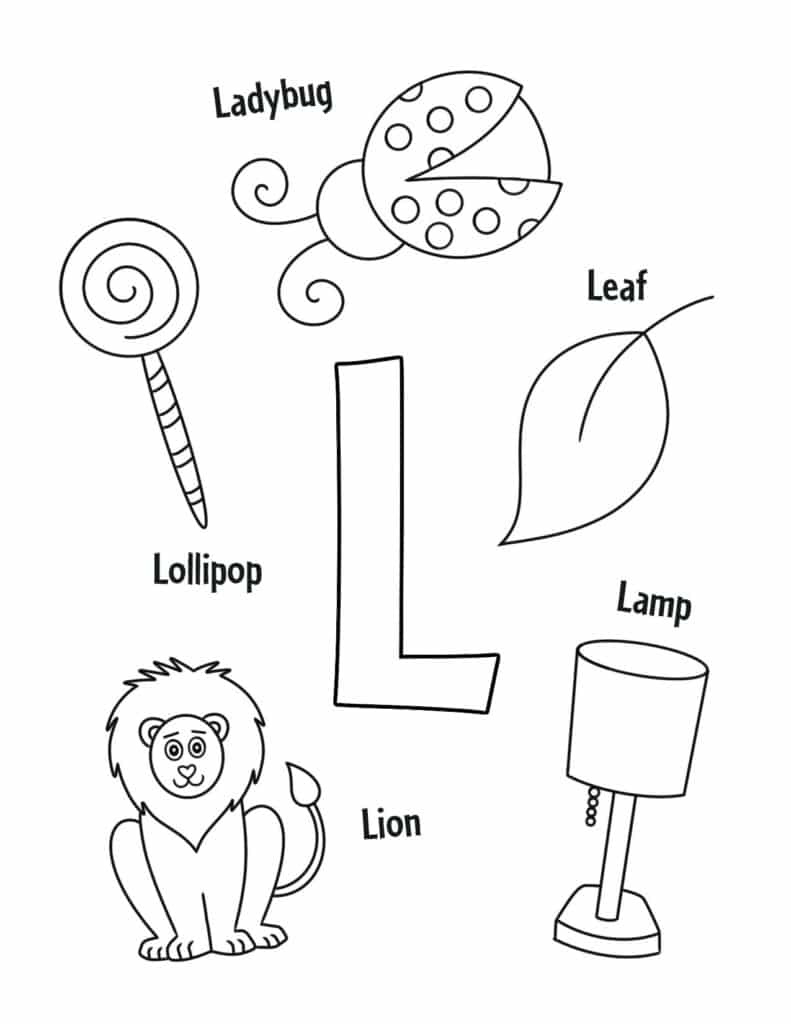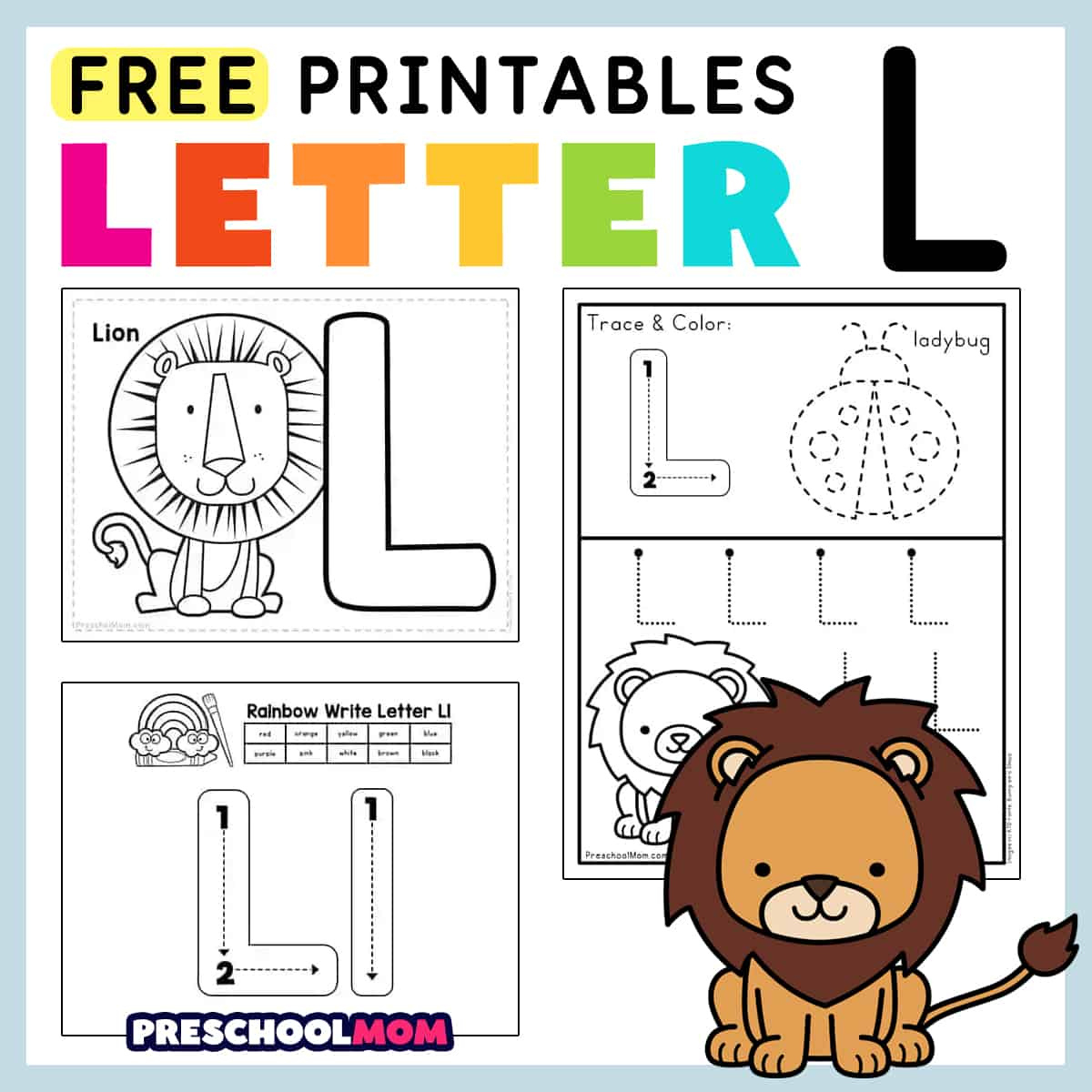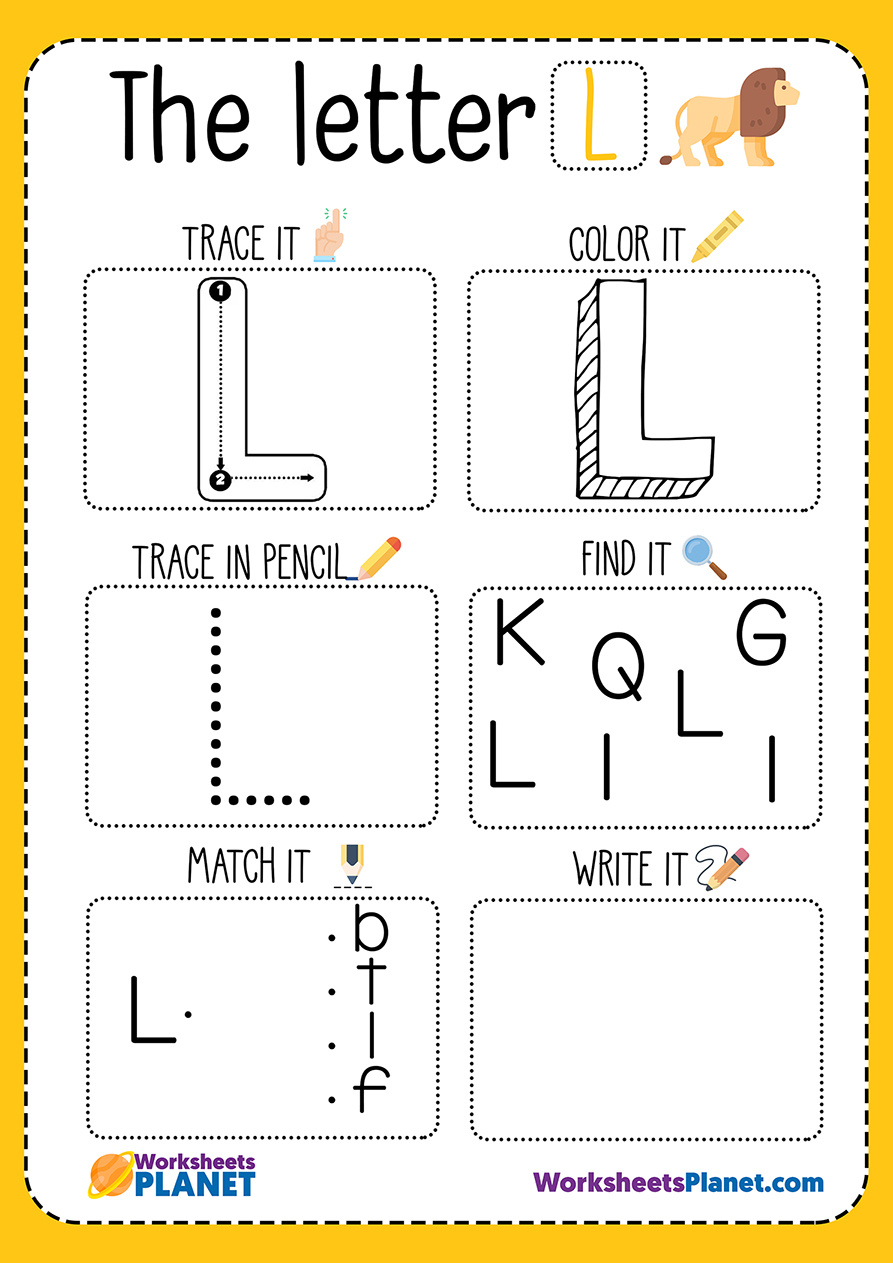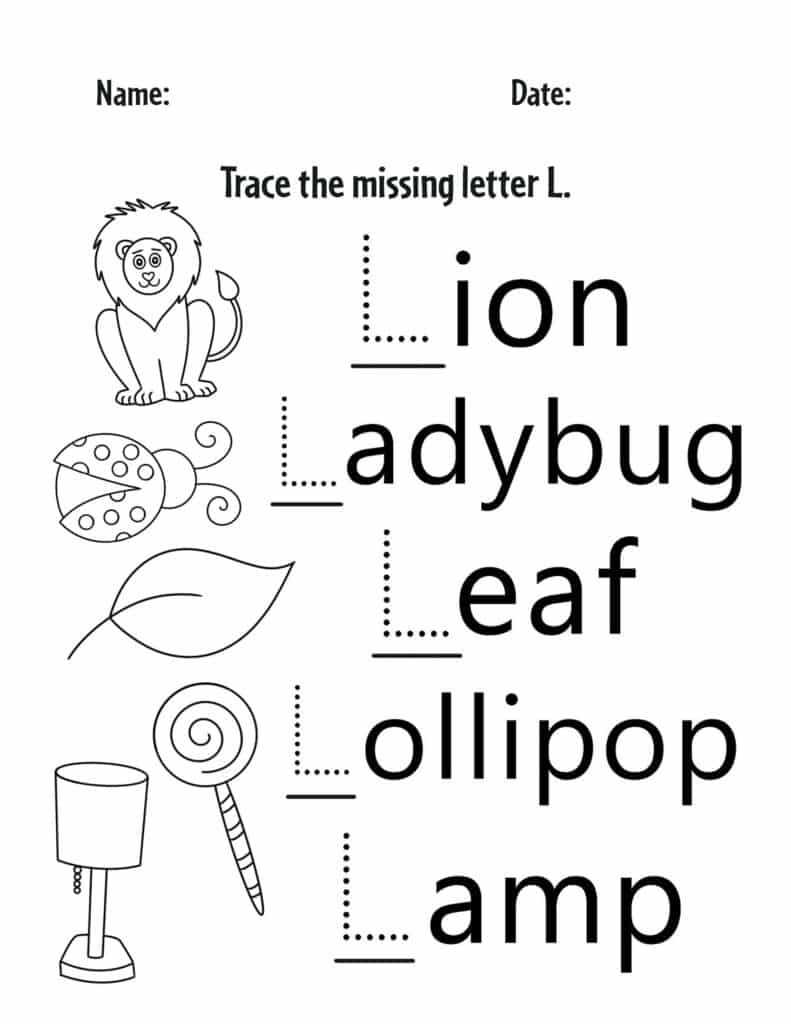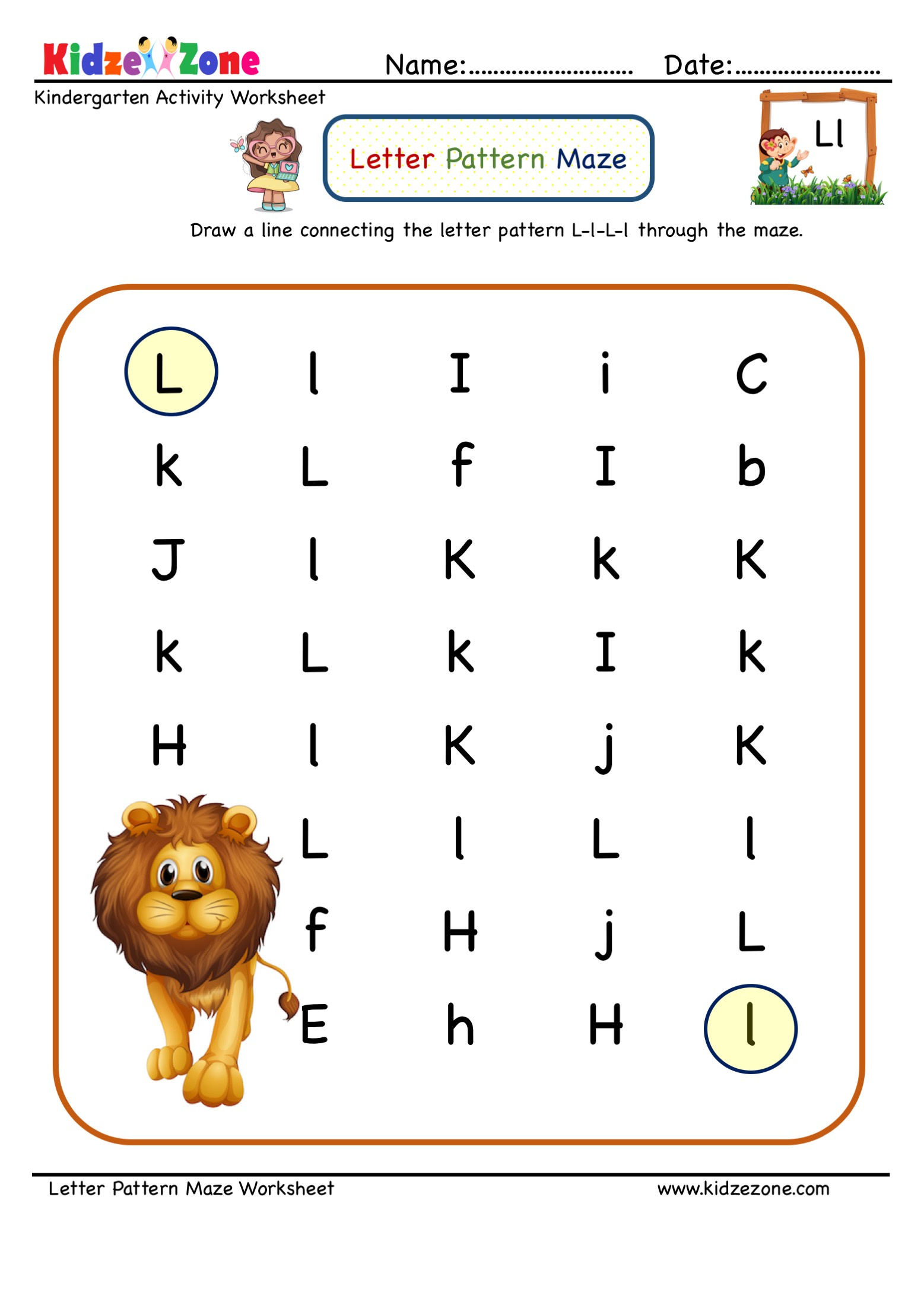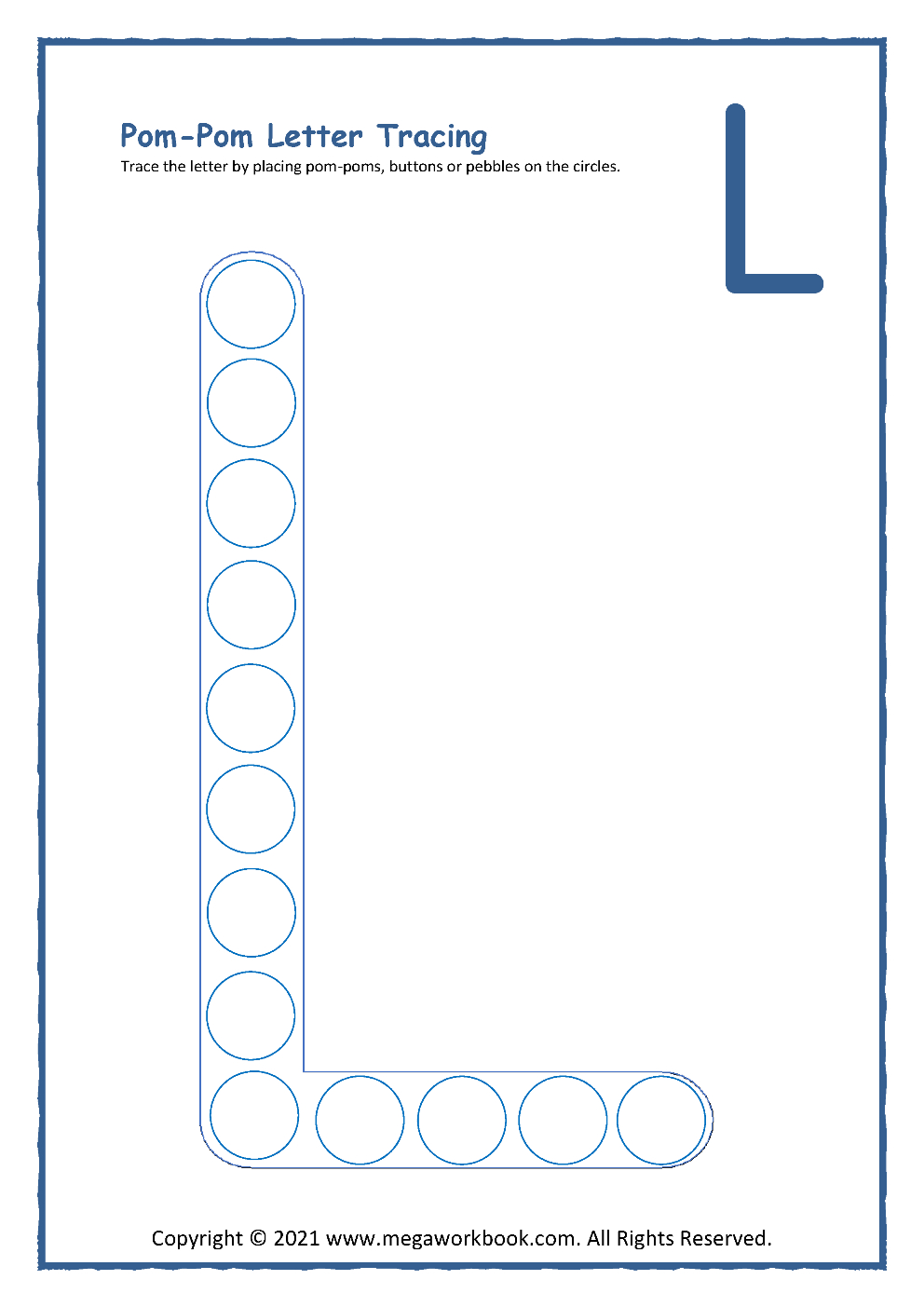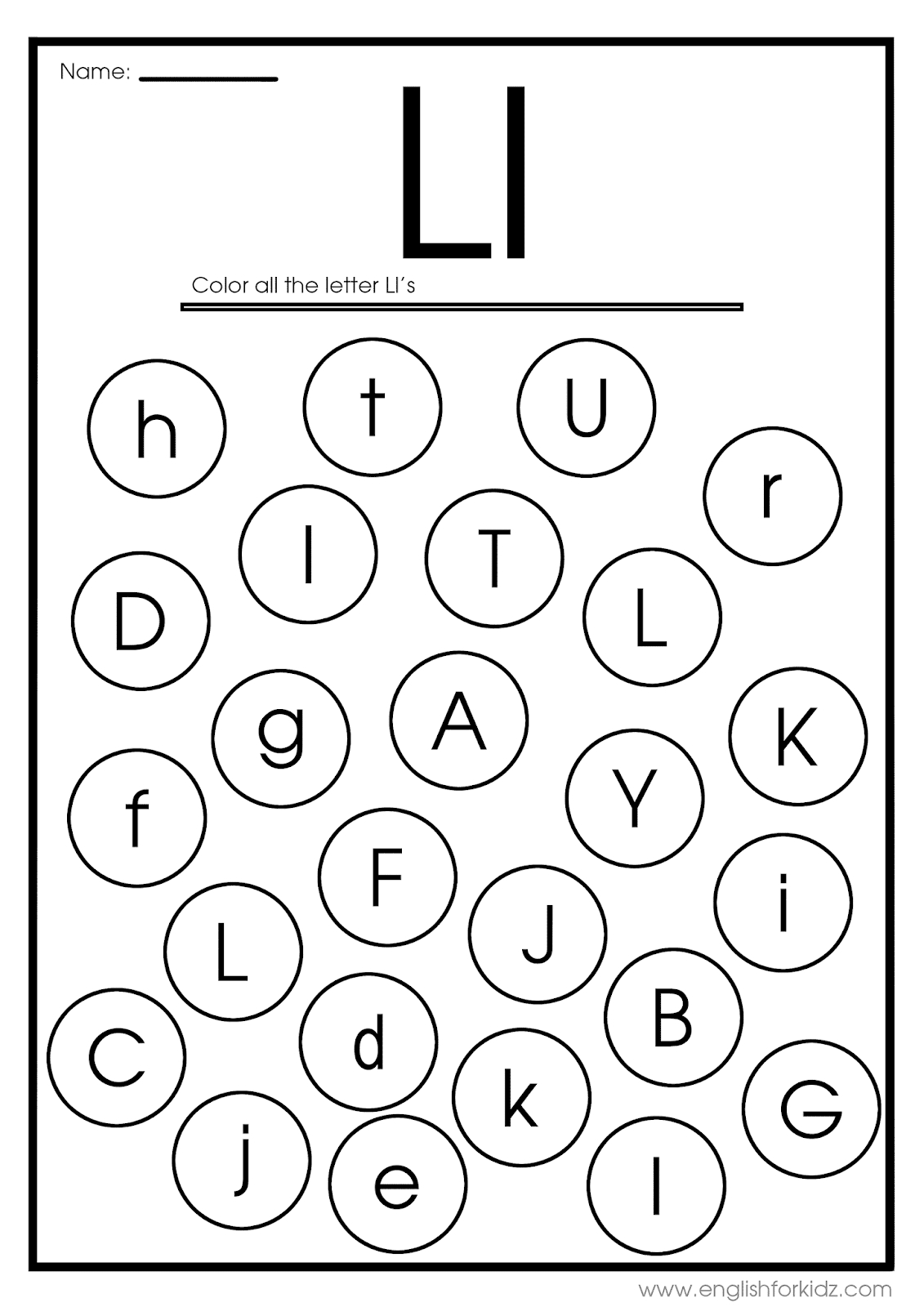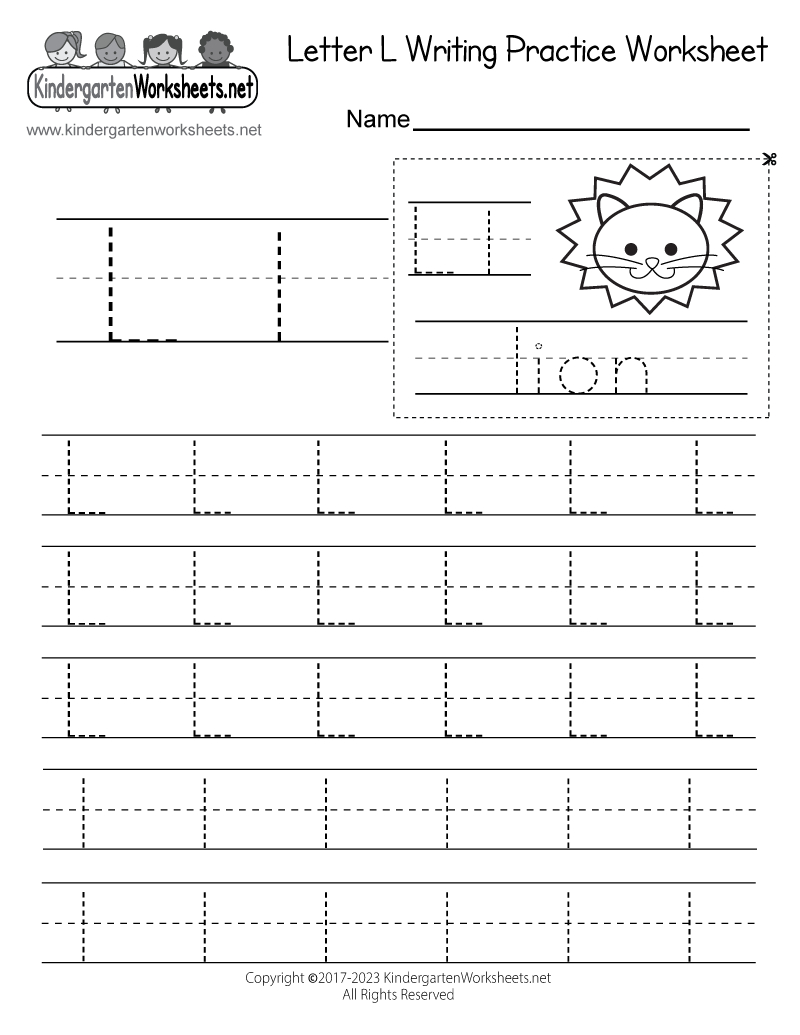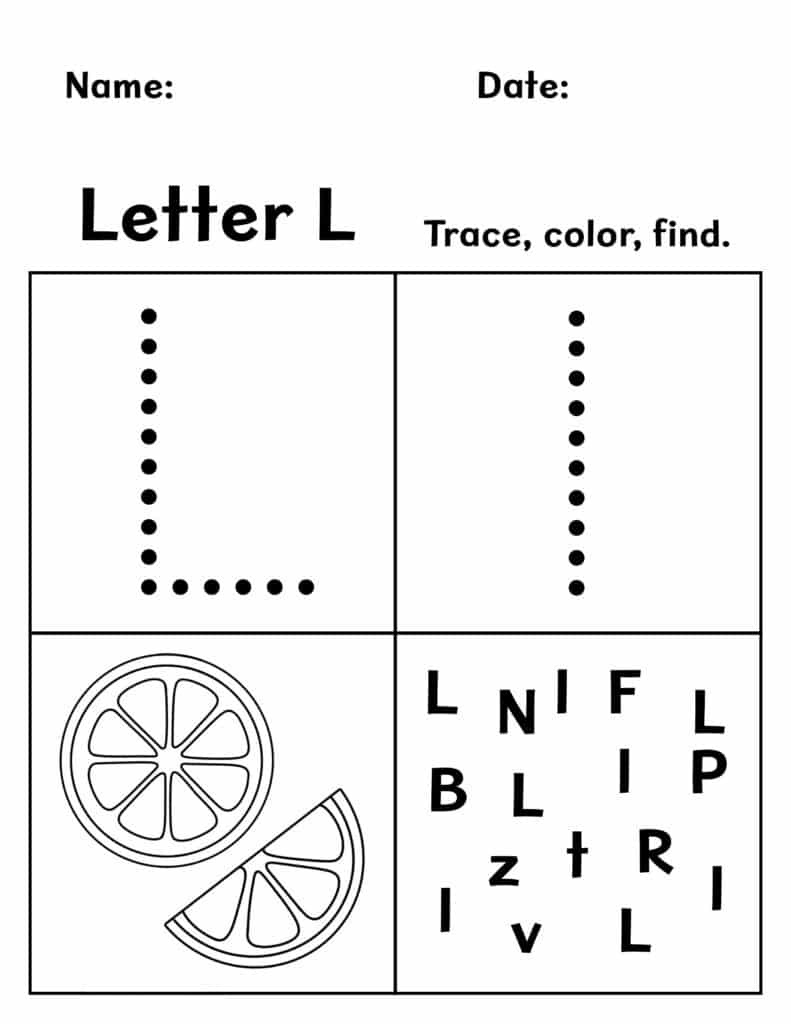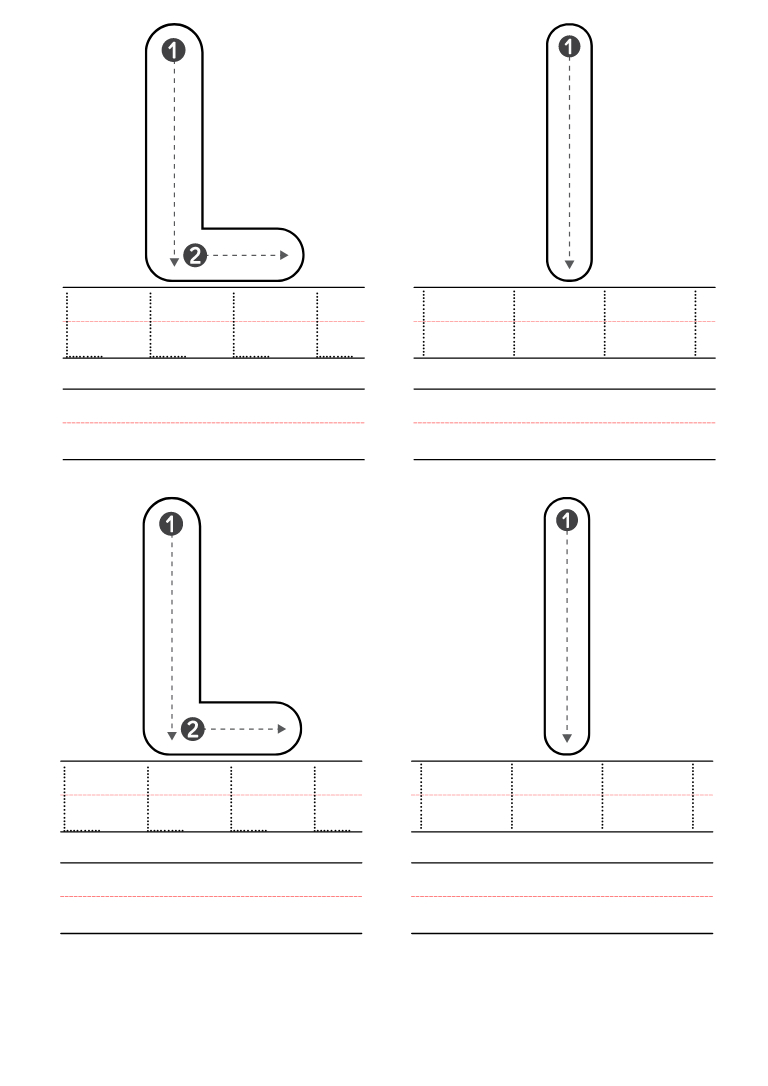Letter L Worksheets – Are you ready to unlock the secrets of the letter L with your little learner? With fun-filled and interactive Letter L worksheets, you can help your preschool or kindergarten student master this crucial alphabet letter. From tracing exercises to phonics games, these worksheets are designed to make learning a breeze. In this article, we’ll look into the world of Letter L worksheets and explore the many ways they can support your child’s literacy development.
Letter L Worksheets Printable
What activities are commonly included in Letter L worksheets for preschool and kindergarten students?
Your child’s educational journey is about to get exciting! Letter L worksheets are designed to engage preschool and kindergarten students in a variety of fun and interactive activities that promote learning and development.
Tracing exercises
Frequently, Letter L worksheets include tracing exercises that help your child develop their fine motor skills and handwriting abilities. These exercises typically involve tracing the uppercase and lowercase forms of the letter L, allowing your child to practice correct letter formation and stroke direction.
Phonics exercises
One of the important skills your child will develop through Letter L worksheets is phonemic awareness. Phonics exercises, such as identifying the sound /l/ makes, are included to enhance sound recognition and pronunciation.
Activities that focus on phonics exercises help your child understand the relationship between sounds and letters, laying the foundation for reading and writing skills. By incorporating phonics exercises, Letter L worksheets provide a comprehensive approach to literacy development.
Coloring and drawing activities
What better way to engage your child than through creative expression? Coloring and drawing activities centered around the letter L encourage your child to think imaginatively while developing their fine motor skills.
Phonics-based coloring activities, such as coloring objects that start with the letter L, help your child connect the sound and letter association, making learning a fun and interactive experience. These activities not only promote creativity but also reinforce phonemic awareness and vocabulary development.
How do Letter L worksheets help children differentiate between uppercase and lowercase L?
One of the primary ways Letter L worksheets assist children in distinguishing between uppercase and lowercase L is by providing a variety of exercises that focus on visual recognition, matching, and sorting activities.
Visual recognition exercises
Worksheets packed with visual recognition exercises help you identify the differences between uppercase and lowercase L by presenting them in various fonts, sizes, and contexts. This enables your child to develop a keen eye for detail and understand the distinct characteristics of each letter form.
Matching games
Help your child develop their matching skills with exercises that ask them to pair uppercase and lowercase L’s. This activity enhances their ability to recognize and differentiate between the two forms.
A significant benefit of matching games is that they encourage your child to focus on the unique features of each letter, promoting a deeper understanding of their shapes and structures.
Sorting activities
Help your child develop their critical thinking skills with sorting activities that require them to categorize uppercase and lowercase L’s into separate groups. This exercise reinforces their understanding of the differences between the two forms.
Activities that involve sorting and categorizing uppercase and lowercase L’s further solidify your child’s knowledge and prepare them for more advanced literacy skills.
What types of tracing exercises are effective for improving handwriting skills in Letter L worksheets?
All Letter L worksheets incorporate various tracing exercises to help you improve your handwriting skills. These exercises are designed to develop your fine motor skills, hand-eye coordination, and letter recognition. Effective tracing exercises include:
| Guided Tracing | Worksheets with dotted lines or arrows to guide your tracing |
| Freehand Tracing | Worksheets with blank spaces for you to practice tracing without guidance |
| Tracing with Different Tools | Worksheets that allow you to practice tracing with various tools, such as crayons, markers, or pencils |
| Tracing with Different Sizes | Worksheets with letters in varying sizes to practice tracing and scaling |
| Tracing with Different Orientations | Worksheets with letters in different orientations, such as vertical or diagonal, to practice tracing and spatial awareness |
Knowing which tracing exercises to use and how to incorporate them into your practice can make a significant difference in improving your handwriting skills.
Guided Tracing
Worksheets with guided tracing exercises provide you with a sense of security and structure, allowing you to focus on developing your fine motor skills and letter recognition. These exercises are especially helpful for young learners who are just starting to develop their handwriting skills.
Freehand Tracing
Tracing exercises without guidance help you develop your hand-eye coordination and muscle memory, allowing you to write more confidently and accurately. This type of exercise is ideal for those who have already developed some handwriting skills and want to refine their technique.
For instance, freehand tracing exercises can help you develop your own unique handwriting style and improve your overall writing speed and accuracy.
Tracing with Different Tools (e.g., Crayons, Markers)
One of the most effective ways to improve your handwriting skills is to practice tracing with different tools, such as crayons, markers, or pencils. This type of exercise helps you develop your fine motor skills and hand-eye coordination, while also allowing you to experiment with different writing styles and techniques.
Freehand tracing with different tools can also help you develop your creativity and self-expression, making learning more engaging and fun.
How can Letter L worksheets incorporate phonics exercises to enhance sound recognition and pronunciation?
Not only do Letter L worksheets provide a fun and engaging way to learn the alphabet, but they can also incorporate phonics exercises to enhance sound recognition and pronunciation. By incorporating these exercises, you can help your child develop a stronger understanding of the relationship between sounds and letters.
Word families
For instance, you can include word families like “lake”, “late”, and “lame” to help your child recognize the consistent sound of the letter L in different words.
Rhyming exercises
Pronunciation practice is key, and rhyming exercises can be a great way to do so. You can include activities that ask your child to identify words that rhyme with “lake” or “late”, such as “make” or “date”.
The goal of these exercises is to help your child develop phonological awareness, which is the ability to hear and manipulate individual sounds within words. By practicing rhyming, your child will become more aware of the sounds within words and improve their pronunciation.
Sound-isolation activities
Phonics exercises can also include sound-isolation activities, where your child is asked to identify the sound of the letter L in a word. For example, you can ask your child to identify the sound of the letter L in the word “label”.
Letter L worksheets can also include activities that ask your child to isolate the sound of the letter L in a sentence, such as “The lion is sleeping”. This helps your child to focus on the individual sound of the letter L and recognize its importance in forming words.
What are some engaging coloring and drawing activities centered around the letter L?
For young learners, incorporating fun and creative activities into their learning journey can make all the difference in their engagement and retention of new skills.
Letter L-themed pictures
To make learning more enjoyable, try incorporating Letter L-themed pictures into your worksheets. You can include images of lions, lizards, or ladybugs, and have your child color or draw them. This activity helps your child associate the letter L with recognizable objects, making it easier to remember.
L-shaped art projects
Letter L is a great shape to explore through art projects. You can create L-shaped collages using construction paper, glue, and scissors, or make L-shaped patterns using paint, markers, or crayons.
Lshaped art projects are an excellent way to develop your child’s fine motor skills, hand-eye coordination, and creativity. By using different materials and textures, your child can experiment with various techniques and styles, making learning a fun and interactive experience.
Creative writing prompts
Letter L can inspire some amazing creative writing prompts. You can ask your child to imagine they are a lion on a safari adventure, or a lizard exploring a magical forest. Encourage them to write a short story or poem using as many L words as possible.
Activities like these help your child develop their writing skills, imagination, and vocabulary. By incorporating Letter L into their writing, your child will become more familiar with the sound, shape, and usage of the letter, making it easier to recognize and use in their everyday writing.
How Do Letter L Worksheets Contribute to Expanding a Child’s Vocabulary with Words that Start with L?
Despite the many benefits of letter worksheets, one of the most significant advantages is their ability to introduce children to a wide range of words that start with the letter L.
Word Lists
With lists of words like “lion,” “lamb,” and “lake,” Letter L worksheets provide opportunities for children to learn and practice new vocabulary in a fun and engaging way.
Sentence Building
Building on their knowledge of individual words, Letter L worksheets can also include sentence-building exercises that encourage children to use their new vocabulary in context.
Contribute to their language skills by providing opportunities for children to practice constructing simple sentences, such as “The lion is sleeping” or “I see a lake.”
Storytelling Exercises
One of the most effective ways to expand a child’s vocabulary is through storytelling exercises, which can be easily incorporated into Letter L worksheets.
Vocabulary growth is fostered as children are encouraged to use their imagination to create stories featuring words that start with the letter L, such as “Lily went on a long journey to find a lost treasure.”
What Interactive Games or Puzzles Can Be Included in Letter L Worksheets to Make Learning Enjoyable?
Many educational experts agree that incorporating interactive games and puzzles into Letter L worksheets can significantly enhance the learning experience for young students. These engaging activities not only make learning fun but also help develop necessary skills such as problem-solving, critical thinking, and creativity.
Letter L Scavenger Hunt
To create a thrilling scavenger hunt, you can hide large cut-out letters L around the classroom or at home, and ask your child to find them. This activity encourages active learning, develops spatial awareness, and reinforces letter recognition.
Word Searches
Searches for words starting with the letter L can be an exciting way to introduce new vocabulary and improve spelling skills. You can create a word search puzzle with words like “lion,” “lake,” or “lollipop” to keep your child engaged and motivated.
Another benefit of word searches is that they help your child develop their attention to detail and concentration skills. By finding and circling words, your child will improve their visual scanning abilities and become more confident in their reading and writing skills.
Crossword Puzzles
The classic crossword puzzle is an excellent way to challenge your child’s problem-solving skills and reinforce their understanding of the letter L. You can create a simple crossword puzzle with clues related to words starting with the letter L, such as “large cat” or “body of water.”
Understanding the concept of crosswords helps your child develop their critical thinking skills, as they need to think logically and make connections between words. By completing crosswords, your child will also enhance their vocabulary and become more confident in their ability to recognize and spell words starting with the letter L.
How Can You Effectively Use Letter L Worksheets at Home to Support Your Child’s Literacy Development?
Once again, the key to successful literacy development lies in consistent practice and reinforcement. With Letter L worksheets, you can provide your child with a fun and engaging way to learn and practice their literacy skills at home.
Creating a Consistent Routine
Establishing a regular routine is crucial in helping your child develop good study habits and a love for learning. Set aside a specific time each day to work on Letter L worksheets with your child, making it a special bonding experience.
Making it Fun
For young learners, learning should be a joyful experience. Incorporate games, puzzles, and activities that bring the letter L to life, making it more relatable and interesting to your child.
The goal is to create a positive association with learning, so be creative and have fun with it! You can use Letter L worksheets as a starting point and then expand on the activities, incorporating your child’s interests and hobbies.
Providing Feedback and Encouragement
On every step of the way, provide your child with constructive feedback and encouragement. Praise their efforts and accomplishments, no matter how small, to help build their confidence and motivation.
Parents, remember that your role is not only to teach but also to support and guide your child. By providing feedback and encouragement, you can help your child develop a growth mindset, necessary for overcoming challenges and achieving success.
How Can You Effectively Integrate Letter L Worksheets into Your Classroom Curriculum?
Unlike traditional teaching methods, incorporating Letter L worksheets into your classroom curriculum can be a fun and engaging way to teach young learners about the alphabet. Here are some strategies you can use to integrate Letter L worksheets into your teaching:
Whole-class instruction
The whole-class instruction approach involves using Letter L worksheets as a teaching tool for the entire class. You can display the worksheet on a screen or whiteboard and work through it together, pointing out key features and encouraging discussion.
Small-group work
Small-group work allows you to divide your students into smaller groups and assign each group a Letter L worksheet tailored to their skill level. This approach enables you to provide more individualized attention and support.
What’s more, small-group work encourages collaboration and teamwork among students, promoting a sense of community and social learning. By working together, students can learn from one another and develop important skills like communication and problem-solving.
Independent practice
Independent practice involves assigning Letter L worksheets to individual students to complete on their own. This approach helps to reinforce learning and build confidence, as students work at their own pace and take ownership of their learning.
Integrate Letter L worksheets into your independent practice routine by setting aside dedicated time for students to work on their worksheets. You can also provide feedback and support as needed, helping students to stay on track and overcome any challenges they may encounter.
How do Letter L worksheets support the development of early reading and writing skills in young children?
After introducing your child to the wonderful world of letters, you may wonder how Letter L worksheets can support their development of early reading and writing skills. The answer lies in the various activities and exercises included in these worksheets, which are specifically designed to help young children build a strong foundation in literacy.
Building foundational skills
For instance, Letter L worksheets often include tracing exercises that help your child develop their fine motor skills and hand-eye coordination, imperative for writing and reading. These exercises also introduce your child to the correct letter formation, helping them recognize and remember the shape of the letter L.
Encouraging creativity
With Letter L worksheets, your child can engage in fun and creative activities that bring the letter to life. By incorporating coloring and drawing exercises, your child can develop their imagination and creativity while associating the letter L with different objects and scenarios.
Writing and drawing activities centered around the letter L can help your child develop a deeper understanding of the letter’s sound and meaning. For example, they can draw a lion or a ladybug and label it with the letter L, reinforcing their knowledge of the letter’s phonetic sound.
Fostering a love for learning
Learning to read and write can be a daunting task for young children, but Letter L worksheets can make it an enjoyable experience. By incorporating interactive games, puzzles, and exercises, your child can develop a positive attitude towards learning and build confidence in their abilities.
Skills such as phonics recognition, vocabulary building, and handwriting practice are all imperative components of early literacy development. By using Letter L worksheets, you can provide your child with a strong foundation in these skills, setting them up for success in their future academic endeavors. Do not forget, the key is to make learning fun and engaging, and Letter L worksheets can be a valuable tool in achieving this goal.
What Have You Learned About Letter L Worksheets?
Considering all points, you’ve now discovered the wonderful world of Letter L worksheets! You’ve seen how they help preschool and kindergarten students differentiate between uppercase and lowercase L, improve handwriting skills, and recognize sounds and pronunciation. You’ve also learned about engaging coloring activities, vocabulary expansion, interactive games, and effective integration into classroom curricula. With Letter L worksheets, you’re well-equipped to support your child’s literacy development and watch them thrive in early reading and writing skills.
